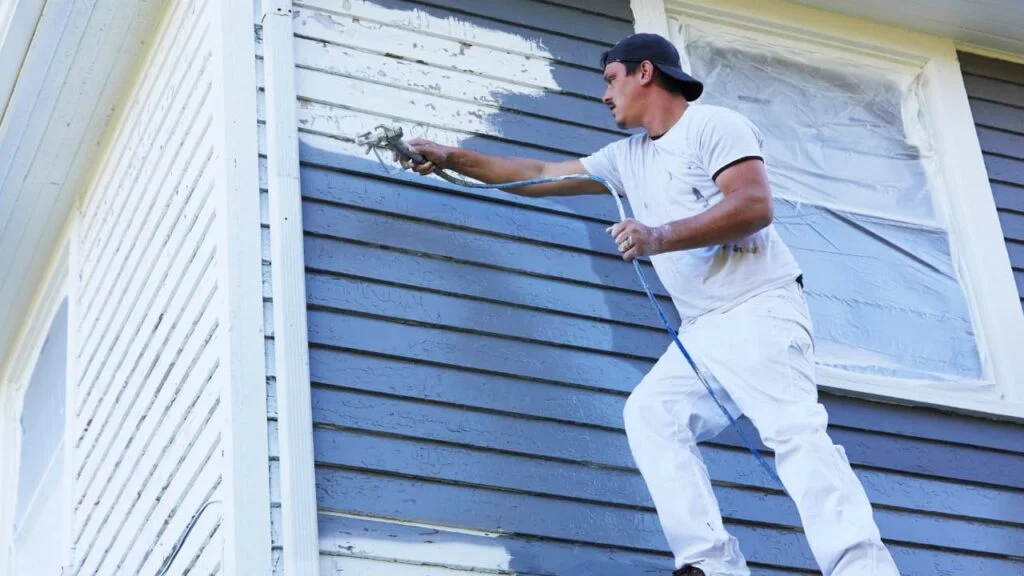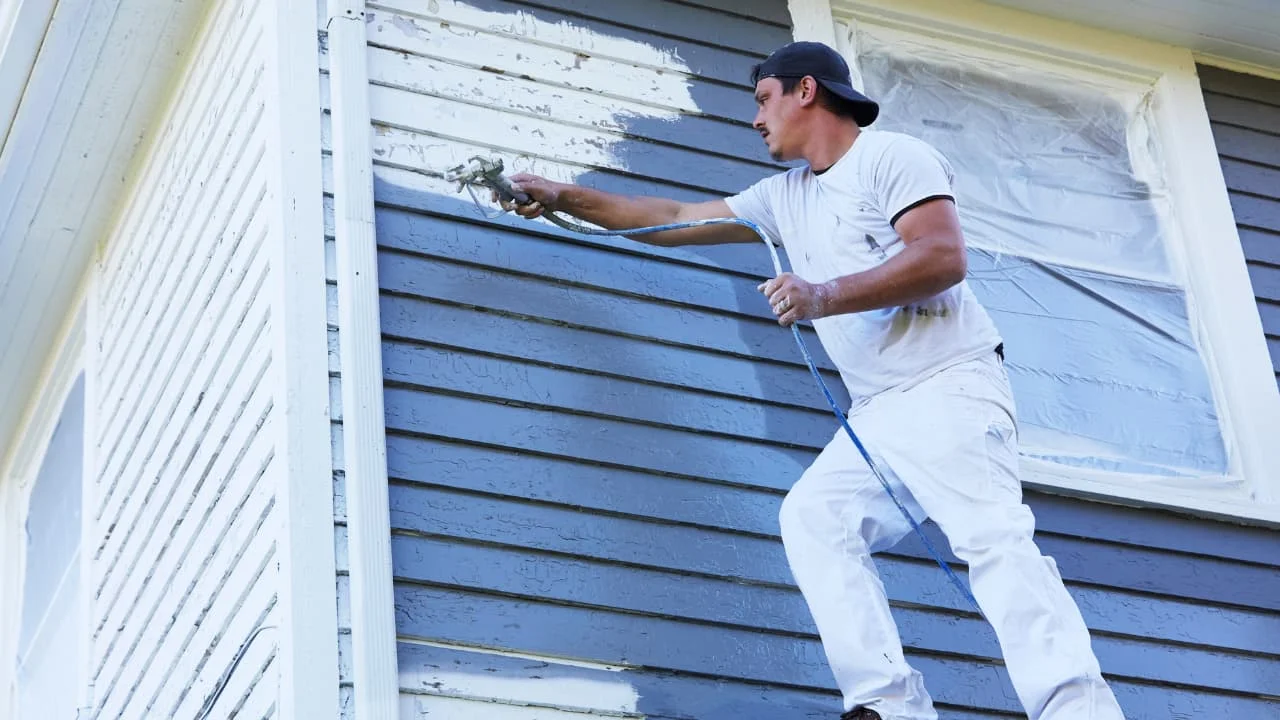Have you ever wondered how long it takes for exterior paint to dry? Well, we were curious too. So, we did some research and found some interesting information about this topic. If you’re also curious about it, you’re in the right place. In this article, we’ll dive into the factors that can affect the drying time of exterior paint and give you some tips on how to speed up the process. So, let’s get started!
The Question: How Long Does It Take For Exterior Paint To Dry
When it comes to exterior paint drying time, there are several factors to consider. Firstly, the type of paint you’re using plays a big role. Oil-based paints tend to take longer to dry compared to water-based paints. Temperature and humidity also play a significant role in the drying process. Generally, it takes around 24 to 48 hours for exterior paint to dry completely. However, it’s important to keep in mind that this time can vary depending on the specific conditions and the type of paint used.
In our upcoming article, we’ll go into more detail about the different types of exterior paint and their drying times. We’ll also discuss how temperature and humidity can affect the drying process and share some tips on how to speed up the drying time. Whether you’re planning on painting your home’s exterior yourself or hiring a professional, knowing how long it takes for exterior paint to dry is essential. So, stay tuned to learn more about this fascinating topic and get ready to give your home a fresh new look!


Table of Contents
How Long Does It Take For Exterior Paint To Dry
Exterior painting projects require careful consideration and planning. One of the most important factors to consider is the drying time of the paint. Understanding the factors that influence drying time can help ensure a successful and long-lasting paint job on exteriors. In this article, we will explore the various factors that affect drying time, tips to expedite the process, and common drying times for different types of paint.
Factors that Affect Drying Time
Type of Paint
The type of paint used plays a significant role in determining the drying time. There are three main types of paint commonly used for exterior projects: water-based paint, oil-based paint, and latex paint.
Water-based paint, also known as acrylic paint, dries relatively quickly. It usually takes around 1 to 2 hours for the paint to dry to the touch and 24 hours for it to fully cure. This type of paint is a popular choice due to its easy clean-up, low odor, and environmental friendliness.
On the other hand, oil-based paint takes a longer time to dry compared to water-based paint. It typically takes up to 6 to 8 hours for the paint to dry to the touch and 24 to 48 hours for it to fully cure. Although oil-based paint offers durability and a smooth finish, it requires extra caution during application due to its longer drying time and strong odor.
Latex paint is a water-based paint that contains synthetic polymers. It combines the quick drying time of water-based paint with the durability of oil-based paint. Latex paint usually dries to the touch within 1 to 2 hours and fully cures in 24 to 48 hours.
Temperature and Humidity
Temperature and humidity levels significantly impact the drying time of exterior paint. Ideally, painting should be done in temperatures between 50 and 85 degrees Fahrenheit for optimal drying. High temperatures can cause the paint to dry too quickly, resulting in an uneven finish and reduced adhesion. In contrast, low temperatures can slow down the drying process and prolong the curing time.
Similarly, humidity levels play a crucial role. High humidity can extend the drying time due to the moisture in the air, which prevents the paint from evaporating. On the other hand, low humidity can cause the paint to dry too quickly, leading to a brittle finish. It is recommended to avoid painting during periods of high humidity to achieve the best results.
Thickness of Paint Layers
The thickness of the paint layers also affects drying time. Applying thin layers of paint allows for better airflow and quicker drying. Conversely, if thick layers of paint are applied, the drying time may be prolonged as the paint takes longer to dry and cure. It is important to follow the manufacturer’s instructions and avoid over-application of paint to ensure optimal drying time.
Applying multiple coats of paint is a common practice for exterior painting projects. Each coat should be allowed to dry fully before applying the next layer. This ensures proper adhesion and a smooth finish. The drying time between coats depends on the type of paint used and the environmental conditions.
Type of Surface
The type of surface being painted also affects the drying time. Different surfaces, such as wood, metal, concrete, and brick, have varying levels of porosity and texture, which can impact how the paint adheres and dries.
Wooden surfaces, for example, are porous and absorbent. They tend to hold moisture and can prolong the drying time of the paint. It is recommended to use a primer specifically designed for wood surfaces to seal the wood, allowing for better adhesion and faster drying.
Metal surfaces, on the other hand, can heat up quickly under direct sunlight. This can cause the paint to dry too fast and result in a less even finish. It is advisable to paint metal surfaces during cooler times of the day or provide shade to prevent rapid drying.
Concrete and brick surfaces can also absorb moisture, which may lead to longer drying times. It is important to ensure that the surfaces are clean, dry, and free from any contaminants before applying paint.
Tips to Expedite Drying Time
Expedite the drying time of exterior paint by following these useful tips:
Ensure Proper Ventilation
Proper ventilation is essential for faster drying. Open windows and doors to allow air circulation, which helps the paint dry more efficiently. Use fans or air movers to facilitate airflow and expedite the drying process.
Use a Fan or Air Mover
Using a fan or air mover can promote quicker drying by increasing air circulation. Position them strategically to direct airflow toward the painted surface. This can be particularly effective in humid conditions or when painting indoors with limited airflow.
Utilize Heat Sources
Utilizing heat sources can help speed up drying time, especially in cooler or high humidity conditions. Place heat lamps or portable heaters at a safe distance from the painted surface to gently warm the area, encouraging faster evaporation of moisture.
Avoid Painting During High Humidity
As mentioned earlier, high humidity can significantly prolong the drying time. It is best to avoid painting exteriors during periods of high humidity to achieve optimal drying. Check the local weather forecast and choose a day with lower humidity levels for the best results.
Common Drying Times for Different Paints
The drying time of exterior paint varies depending on the type of paint used. Here are some general guidelines:
Water-based paint usually takes around 1 to 2 hours to dry to the touch and 24 hours to fully cure.
Oil-based paint typically takes 6 to 8 hours to dry to the touch and 24 to 48 hours to fully cure.
Latex paint, being a type of water-based paint, dries relatively quickly, taking around 1 to 2 hours to dry to the touch and 24 to 48 hours to fully cure.
It is important to note that these times are approximate and can vary based on environmental factors, such as temperature and humidity.
Factors that May Prolong Drying Time
Several factors can prolong the drying time of exterior paint. These include:
Cold and Damp Weather
Cold and damp weather conditions can significantly increase drying time. Moisture in the air can impede the evaporation of water from the paint, resulting in extended drying and curing times. It is advisable to avoid painting during these conditions if possible to ensure optimal results.
Poor Ventilation
Insufficient air circulation and poor ventilation can slow down the drying process. It is important to open windows and doors, use fans, and ensure proper airflow to expedite drying time. Avoid painting in enclosed or poorly ventilated areas.
Applying Thick Layers of Paint
Applying thick layers of paint can prolong the drying and curing time. Excessive paint can trap moisture and hinder the evaporation process. It is recommended to follow the manufacturer’s instructions regarding the recommended thickness of paint layers for optimal drying.
Best Time to Paint Exteriors
Choosing the best time to paint exteriors can contribute to a successful paint job. Ideal weather conditions for exterior painting include temperatures between 50 and 85 degrees Fahrenheit, moderate humidity levels, and mild wind conditions. However, considerations for different climates should also be taken into account.
In warmer climates, it is advisable to paint early in the day or late in the afternoon to avoid excessive heat. In colder climates, it is best to avoid painting during freezing temperatures to ensure proper drying and adhesion.
Conclusion
Understanding the drying time of exterior paint is crucial for a successful painting project. The factors discussed, such as the type of paint, temperature, and humidity, the thickness of paint layers, and the type of surface, all play a role in determining how long it takes for paint to dry. By following recommended guidelines and tips to expedite drying time, one can achieve a durable and aesthetically pleasing paint job on exteriors.
Proper planning and preparation, along with choosing the right type of paint, are essential for optimal results. So, the next time you embark on an exterior painting project, keep these factors in mind and enjoy the beauty and longevity of a well-dried paint job.


